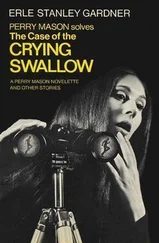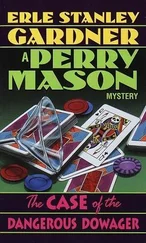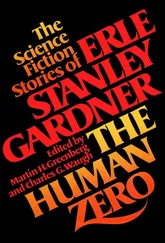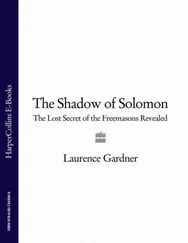Daniel Gardner - The Science of Fear
Здесь есть возможность читать онлайн «Daniel Gardner - The Science of Fear» весь текст электронной книги совершенно бесплатно (целиком полную версию без сокращений). В некоторых случаях можно слушать аудио, скачать через торрент в формате fb2 и присутствует краткое содержание. ISBN: , Издательство: Penguin Group (USA) Incorporated, Жанр: Психология, Политика, Прочая научная литература, на английском языке. Описание произведения, (предисловие) а так же отзывы посетителей доступны на портале библиотеки ЛибКат.
- Название:The Science of Fear
- Автор:
- Издательство:Penguin Group (USA) Incorporated
- Жанр:
- Год:неизвестен
- ISBN:9780525950622
- Рейтинг книги:3 / 5. Голосов: 1
-
Избранное:Добавить в избранное
- Отзывы:
-
Ваша оценка:
- 60
- 1
- 2
- 3
- 4
- 5
The Science of Fear: краткое содержание, описание и аннотация
Предлагаем к чтению аннотацию, описание, краткое содержание или предисловие (зависит от того, что написал сам автор книги «The Science of Fear»). Если вы не нашли необходимую информацию о книге — напишите в комментариях, мы постараемся отыскать её.
The Science of Fear — читать онлайн бесплатно полную книгу (весь текст) целиком
Ниже представлен текст книги, разбитый по страницам. Система сохранения места последней прочитанной страницы, позволяет с удобством читать онлайн бесплатно книгу «The Science of Fear», без необходимости каждый раз заново искать на чём Вы остановились. Поставьте закладку, и сможете в любой момент перейти на страницу, на которой закончили чтение.
Интервал:
Закладка:
But the delightful thing—delightful from your perspective—is that their doubt won’t matter. Online stalking does happen, after all. And even the skeptical parent who dismisses the 50,000 number will find herself thinking, well, what is the right answer? How many pedophiles are on the Internet? Almost instantly, she will have a plausible answer. That’s Gut’s work. And the basis for Gut’s judgment was the Anchoring Rule: Start with the number heard most recently and adjust downward.
Downward to what? Let’s say she cut the number pretty dramatically and settled on 10,000. Reason dictates that if the 50,000 figure is nonsense, then a number derived by arbitrarily adjusting that nonsense figure downward is nonsense squared. The 10,000 figure is totally meaningless and it should be dismissed.
The parent probably won’t do that, however. To her, the 10,000 figure will feel right for reasons she wouldn’t be able to explain if she were asked to. Not even her skepticism about corporate marketing and bad journalism will protect her because, in her mind, this number didn’t come from marketers or journalists. It came from her. It’s what she feels is true. And for a parent, the thought of 10,000 pedophiles hunting children online at each and every moment is pretty damned scary.
Congratulations. You have a new customer.
The Anchoring Rule, as influential as it is, is only a small part of a much wider scientific breakthrough with vast implications. As always in science, there are many authors and origins of this burgeoning field, but two who stand out are psychologists Daniel Kahneman and Amos Tversky.
Four decades ago, Kahneman and Tversky collaborated on research that looked at how people form judgments when they’re uncertain of the facts. That may sound like a modest little backwater of academic work, but it is actually one of the most basic aspects of how people think and act. For academics, it shapes the answers to core questions in fields as diverse as economics, law, health, and public policy. For everyone else, it’s the stuff of daily life: what jobs we take; who we marry; where we live; whether we have children, and how many. It’s also crucial in determining how we perceive and respond to the endless list of threats—from choking on toast to the daily commute to terrorist attacks—that could kill us.
When Kahneman and Tversky began their work, the dominant model of how people make decisions was that of Homo economicus . “Economic man” is supremely rational. He examines evidence. He calculates what would best advance his interests as he understands them, and he acts accordingly. The Homo economicus model ruled economics departments and was hugely influential in public policy circles as well, in part because it suggested that influencing human behavior was actually rather simple. To fight crime, for example, politicians need only make punishments tougher. When the potential costs of crime outweigh the potential benefits, would-be criminals would calculate that the crime no longer advanced their interests and they would not commit it.
“For every problem there is a solution that is simple, clean, and wrong,” wrote H. L. Mencken, and the Homo economicus model is all that. Unlike Homo economicus , Homo sapiens is not perfectly rational. Proof of that lies not in the fact that humans occasionally make mistakes. The Homo economicus model allows for that. It’s just that in certain circumstances, people always make mistakes. We are systematically flawed. In 1957, Herbert Simon, a brilliant psychologist/economist/political scientist and future Nobel laureate, coined the term bounded rationality . We are rational, in other words, but only within limits.
Kahneman and Tversky set themselves the task of discovering those limits. In 1974, they gathered together several years’ work and wrote a paper with the impressively dull title of “Judgment Under Uncertainty: Heuristics and Biases.” They published it in Science , rather than a specialist journal, because they thought some of the insights might be interesting to non-psychologists. Their little paper caught the attention of philosophers and economists and a furious debate began. It lasted for decades, but Kahneman and Tversky ultimately prevailed. The idea of “bounded rationality” is now widely accepted, and its insights are fueling research throughout the social sciences. Even economists are increasingly accepting that Homo sapiens is not Homo economicus , and a dynamic new field called “behavioral economics” is devoted to bringing the insights of psychology to economics.
Amos Tversky died in 1996. In 2002, Daniel Kahneman experienced the academic equivalent of a conquering general’s triumphal parade: He was awarded the Prize in Economic Sciences in Memory of Alfred Nobel. He is probably the only winner in the history of the prize who never took so much as a single class in economics.
The amazing thing is that the Science article, which sent shock waves out in every direction, is such a modest thing on its face. Kahneman and Tversky didn’t say anything about rationality. They didn’t call Homo economicus a myth. All they did was lay out solid research that revealed some of the heuristics—the rules of thumb—that Gut uses to make judgments, such as guessing how old Gandhi was when he died or whether it’s safe to drive to work. Today, Kahneman thinks that’s one reason that the article was as influential as it was. There was no grand theorizing, only research so solid it would withstand countless challenges in the years ahead.
Like the paper itself, the three rules of thumb it revealed were admirably simple and clear. The first—the Anchoring Rule—we’ve already discussed. The second is what psychologists call the “representativeness heuristic,” which I’ll call the Rule of Typical Things. And finally, there is the “availability heuristic,” or the Example Rule, which is by far the most important of the three in shaping our perceptions and reactions to risk.
THE RULE OF TYPICAL THINGS
Linda is thirty-one years old, single, outspoken, and very bright. She majored in philosophy. As a student, she was deeply concerned with issues of discrimination and social justice, and also participated in anti-nuclear demonstrations.
How likely is it that Linda
• is a teacher in elementary school?
• works in a bookstore and takes yoga classes?
• is active in the feminist movement?
• is a psychiatric social worker?
• is a member of the League of Women Voters?
• is a bank teller?
• is an insurance salesperson?
• is a bank teller and is active in the feminist movement?
Now, please rank these descriptions from most to least likely.
This is one of the most famous quizzes in psychology. When Kahneman and Tversky wrote the profile of “Linda” almost forty years ago, they intended to make it strongly match people’s image of an active feminist (an image that likely stood out a little more strongly at the time). Some of the descriptions on the list seem to be right on target. A member of the League of Women Voters? Yes, that fits. So it’s very likely true and it will certainly be at or near the top of the list. Active in the feminist movement? Absolutely. It will also rank highly. But an insurance salesperson? A bank teller? There’s nothing in the profile of Linda that specifically suggests either of these is correct, so people taking this quiz rank them at or near the bottom of the list.
That’s simple enough, but what about the final description of Linda as a bank teller who is also active in the feminist movement? Almost everyone who takes this quiz feels that, yes, this seems at least somewhat likely— certainly more likely than Linda being an insurance salesperson or a bank teller. When Kahneman and Tversky gave this quiz to undergraduate students, 89 percent decided it was more likely that Linda is a bank teller who is active in the feminist movement than that she is a bank teller alone.
Читать дальшеИнтервал:
Закладка:
Похожие книги на «The Science of Fear»
Представляем Вашему вниманию похожие книги на «The Science of Fear» списком для выбора. Мы отобрали схожую по названию и смыслу литературу в надежде предоставить читателям больше вариантов отыскать новые, интересные, ещё непрочитанные произведения.
Обсуждение, отзывы о книге «The Science of Fear» и просто собственные мнения читателей. Оставьте ваши комментарии, напишите, что Вы думаете о произведении, его смысле или главных героях. Укажите что конкретно понравилось, а что нет, и почему Вы так считаете.












